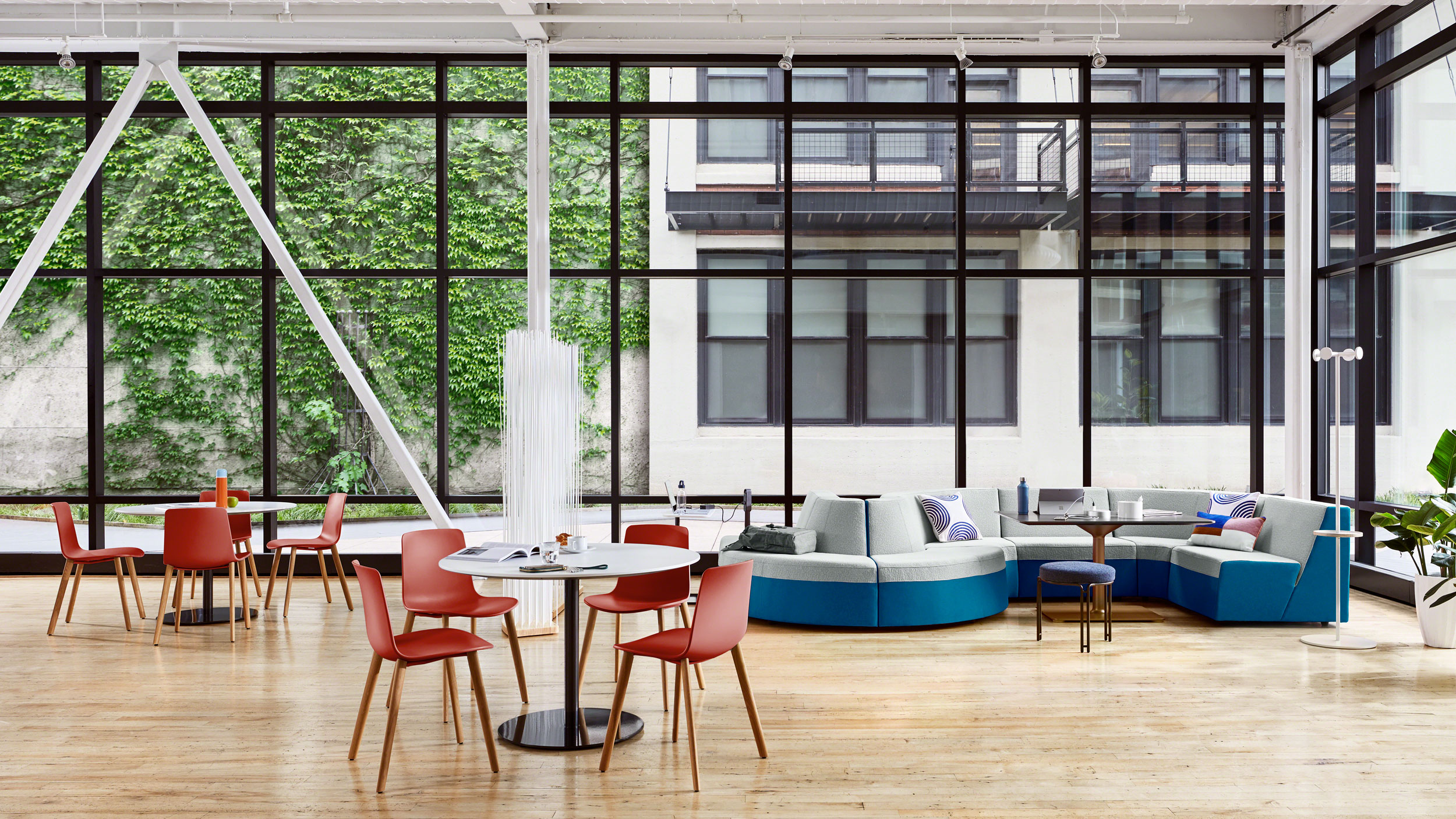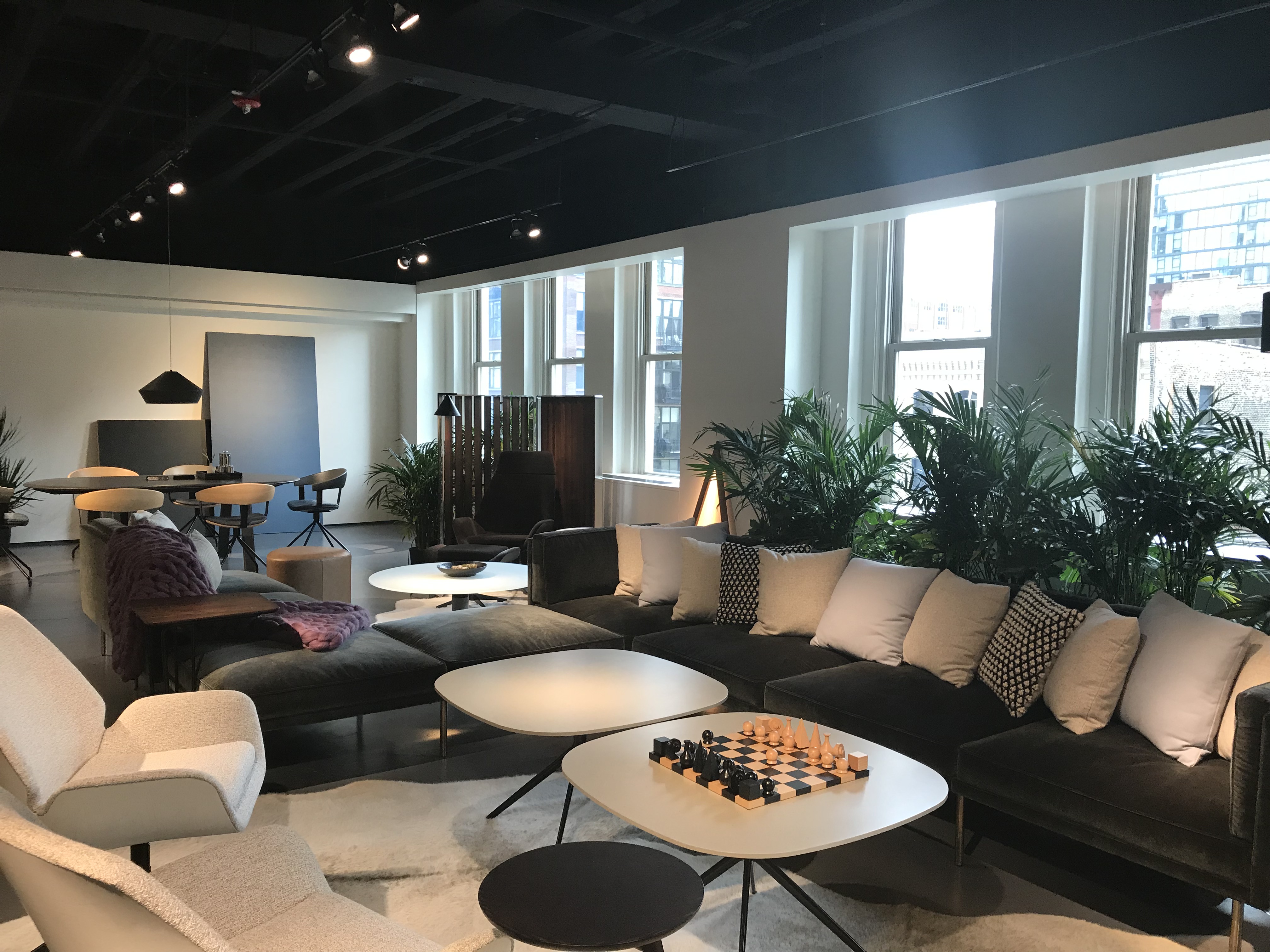Human-centric workplace
Ambius, the world's largest interior landscaping company, published an annual report highlighting the top trends in office design for 2020 and beyond.
The new year will see a continued evolution in the understanding of the human-centric workplace with designs that improve employee performance and wellbeing, integrate innovative technologies, offer multi-functional capabilities, and facilitate an inspiring and engaging environment for top talent. Designers are working to create authentic workplaces that elevate the human experience and reconnect the building's occupants with the natural world.
Macro trends for the coming year include dynamic, community-oriented spaces. Workplace designers are focused on incorporating flexible amenities to create multi-functional spaces that adapt to real-time business needs. Biophilic elements such as wood and plants are seamlessly incorporated as work environments shift towards human-centric, environmentally conscious spaces.
Experts also foresee hospitality-inspired co-working spaces that are reimagined for impactful experiences spearheaded by innovation. Incorporating features such as restaurants, relaxation spaces, and social hubs that inspire occupants and encourage social interaction. Another macro trend expect in 2020 is the next wave of wellness-inspired, sustainable design focused on a harmonious relationship between nature, buildings, and the people that inhabit them.
Among the micro trends detailed in the report is hanging foliage. This statement design breathes life and creativity into a space with plants and greenery while leaving the floor space open for other features. Innovative modular furniture with ergonomic, multi-purpose capabilities is expected to grow in popularity as it enhances flexibility, community, and wellness making it highly compatible with macro trends.
"As the job market grows more competitive for employers, companies are recognising the advantages that creating a modern workplace environment provides in attracting and retaining talent," said Laura Burns-Lambert, sensory designer for Ambius. "Incorporating biophilic design and prioritizing a connection with nature unites many of the broader trends our team foresees in the coming years."
Plants have long been recognised as valuable design features that add beauty and aesthetic power to a business in addition to boosting overall employee wellbeing. Modern research increasingly shows that biophilic commercial spaces, those designed to connect humans with nature, also have dramatic health and wellness benefits, providing the business with advantages through improved employee health and attendance, job satisfaction, and more.
To view the complete Office Design Trends of 2020 Report, please visit http://trends.ambius.com/.
[edit] Related articles on Designing Buildings
- Biodiversity in the urban environment.
- Biophilic design.
- Biophilic design research.
- Biophilic design and sustainability.
- Biophilic design - health and wellbeing in buildings.
- Biophilic gym.
- Designing for employee wellbeing.
- Environmental - sustainable - green design.
- Green roof.
- Green space.
- Green walls.
- Health and productivity in sustainable buildings.
- Human centric.
- Human-centric lighting.
- Kevin McCloud's 'Green Heroes' 2019
- Landscape urbanism.
- Planting.
- The biophilic office.
- The Flourish Model to enhance wellbeing.
- Wellbeing.
- Wood and healthcare buildings.
- 2019 Wellness and biophilia symposium.
Featured articles and news
RTPI leader to become new CIOB Chief Executive Officer
Dr Victoria Hills MRTPI, FICE to take over after Caroline Gumble’s departure.
Social and affordable housing, a long term plan for delivery
The “Delivering a Decade of Renewal for Social and Affordable Housing” strategy sets out future path.
A change to adoptive architecture
Effects of global weather warming on architectural detailing, material choice and human interaction.
The proposed publicly owned and backed subsidiary of Homes England, to facilitate new homes.
How big is the problem and what can we do to mitigate the effects?
Overheating guidance and tools for building designers
A number of cool guides to help with the heat.
The UK's Modern Industrial Strategy: A 10 year plan
Previous consultation criticism, current key elements and general support with some persisting reservations.
Building Safety Regulator reforms
New roles, new staff and a new fast track service pave the way for a single construction regulator.
Architectural Technologist CPDs and Communications
CIAT CPD… and how you can do it!
Cooling centres and cool spaces
Managing extreme heat in cities by directing the public to places for heat stress relief and water sources.
Winter gardens: A brief history and warm variations
Extending the season with glass in different forms and terms.
Restoring Great Yarmouth's Winter Gardens
Transforming one of the least sustainable constructions imaginable.
Construction Skills Mission Board launch sector drive
Newly formed government and industry collaboration set strategy for recruiting an additional 100,000 construction workers a year.
New Architects Code comes into effect in September 2025
ARB Architects Code of Conduct and Practice available with ongoing consultation regarding guidance.
Welsh Skills Body (Medr) launches ambitious plan
The new skills body brings together funding and regulation of tertiary education and research for the devolved nation.
Paul Gandy FCIOB announced as next CIOB President
Former Tilbury Douglas CEO takes helm.
UK Infrastructure: A 10 Year Strategy. In brief with reactions
With the National Infrastructure and Service Transformation Authority (NISTA).
























